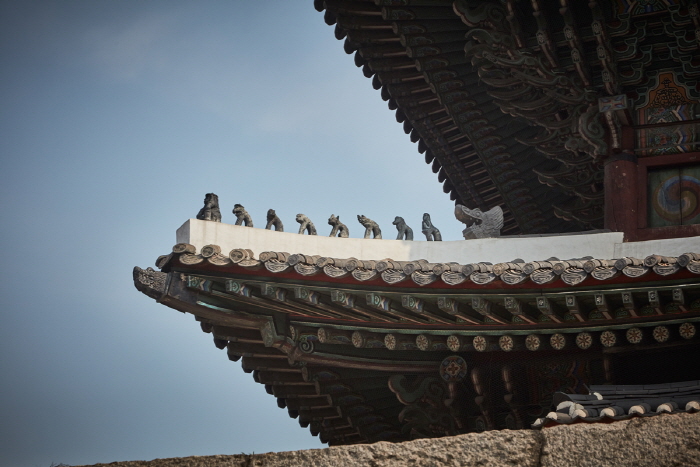Tonymoly - Dongdaemun Branch [Tax Refund Shop] (토니모리 동대문)
2.0Km 2024-04-18
257, Jangchungdan-ro, Jung-gu, Seoul
-
Heunginjimun Gate - Dongdaemun Gate (흥인지문)
2.1Km 2024-10-10
288, Jong-ro, Jongno-gu, Seoul
+82-2-2148-1842
Heunginjimun Gate was built to protect Hanseongbu, which historically housed essential government facilities. Heunginjimun Gate was the gate on the east side of the outer wall of Seoul Fortress among eight gates. It is referred to as Dongdaemun Gate as well. The gate was constructed during King Taejo’s 5th year in 1396, remodeled during the reign of King Danjong in 1453, and was newly built in 1869 during the sixth year of King Gojong’s reign in 1869.
The gate features a hipped roof with five front and two side compartments on a two-storied building. The thin and weak bracket system supports the eaves and is excessively decorated, reflecting the construction features of the late Joseon period. Also, outside of the fortress is the half-circle-shaped Ongseong, a small wall, to protect the gate.
One of the unique factors of Heunginjimun Gate is that it is the only gate among Seoul’s eight to have Ongseong, further exhibiting the style of construction used during the late Joseon period.
![Grooverhyme [Tax Refund Shop] (그루브라임)](http://tong.visitkorea.or.kr/cms/resource/21/3313421_image2_1.jpg)
![ABC-Mart [Tax Refund Shop] (ABC마트)](http://tong.visitkorea.or.kr/cms/resource/93/3314493_image2_1.jpg)
![Dr. Martens [Tax Refund Shop] (닥터마틴)](http://tong.visitkorea.or.kr/cms/resource/74/3312774_image2_1.jpg)
![M-piecemall [Tax Refund Shop] (엠피스몰)](http://tong.visitkorea.or.kr/cms/resource/63/3314763_image2_1.jpg)
![Refurb Stock [Tax Refund Shop] (리퍼브스톡)](http://tong.visitkorea.or.kr/cms/resource/96/3313396_image2_1.jpg)
![189 shop [Tax Refund Shop] (189#(189샵))](http://tong.visitkorea.or.kr/cms/resource/01/3313501_image2_1.jpg)
![Lepitta [Tax Refund Shop] (르피타)](http://tong.visitkorea.or.kr/cms/resource/71/3313871_image2_1.jpg)


 English
English
 한국어
한국어 日本語
日本語 中文(简体)
中文(简体) Deutsch
Deutsch Français
Français Español
Español Русский
Русский